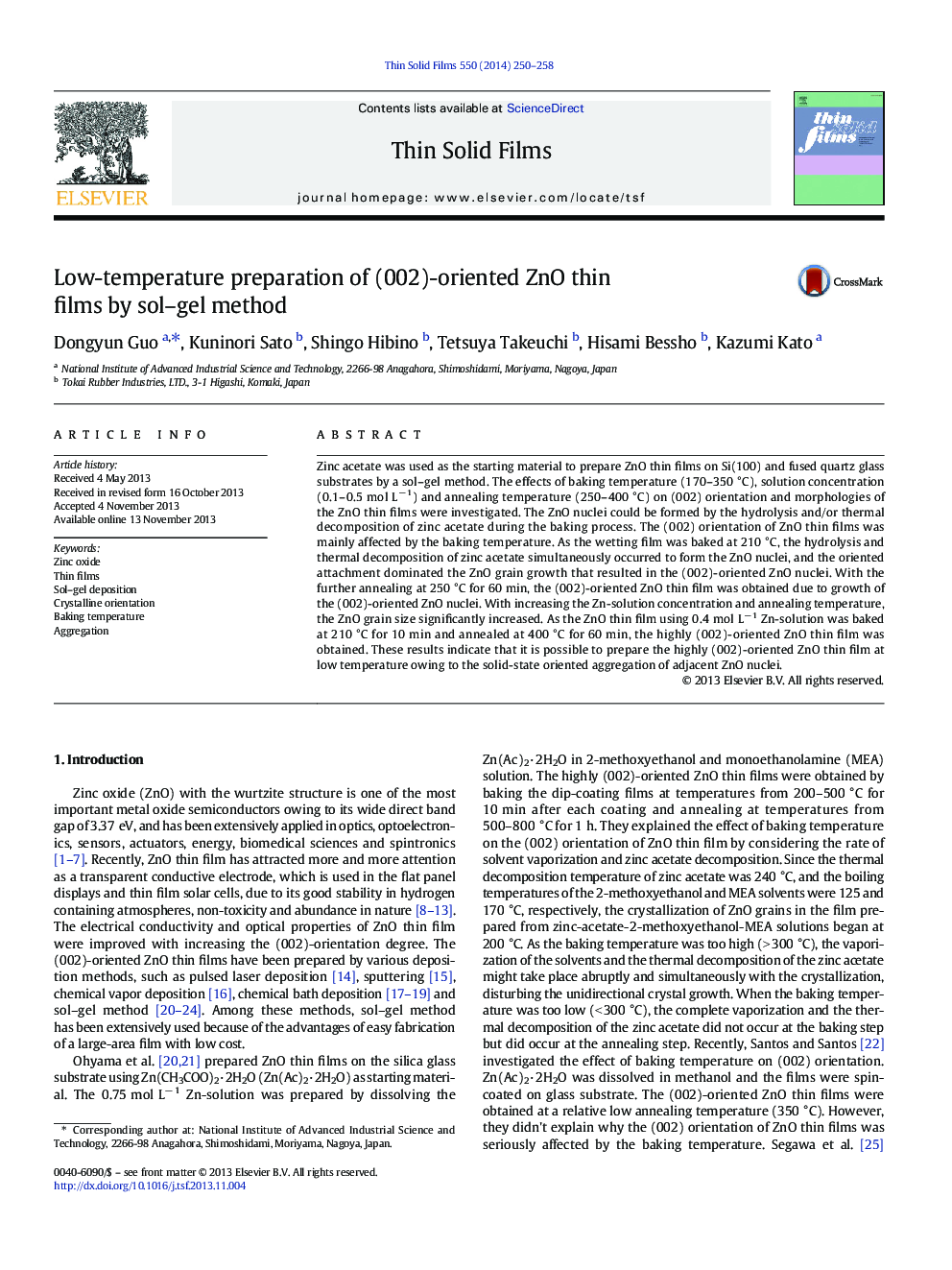| Article ID | Journal | Published Year | Pages | File Type |
|---|---|---|---|---|
| 8035466 | Thin Solid Films | 2014 | 9 Pages |
Abstract
Zinc acetate was used as the starting material to prepare ZnO thin films on Si(100) and fused quartz glass substrates by a sol-gel method. The effects of baking temperature (170-350 °C), solution concentration (0.1-0.5 mol Lâ 1) and annealing temperature (250-400 °C) on (002) orientation and morphologies of the ZnO thin films were investigated. The ZnO nuclei could be formed by the hydrolysis and/or thermal decomposition of zinc acetate during the baking process. The (002) orientation of ZnO thin films was mainly affected by the baking temperature. As the wetting film was baked at 210 °C, the hydrolysis and thermal decomposition of zinc acetate simultaneously occurred to form the ZnO nuclei, and the oriented attachment dominated the ZnO grain growth that resulted in the (002)-oriented ZnO nuclei. With the further annealing at 250 °C for 60 min, the (002)-oriented ZnO thin film was obtained due to growth of the (002)-oriented ZnO nuclei. With increasing the Zn-solution concentration and annealing temperature, the ZnO grain size significantly increased. As the ZnO thin film using 0.4 mol Lâ 1 Zn-solution was baked at 210 °C for 10 min and annealed at 400 °C for 60 min, the highly (002)-oriented ZnO thin film was obtained. These results indicate that it is possible to prepare the highly (002)-oriented ZnO thin film at low temperature owing to the solid-state oriented aggregation of adjacent ZnO nuclei.
Related Topics
Physical Sciences and Engineering
Materials Science
Nanotechnology
Authors
Dongyun Guo, Kuninori Sato, Shingo Hibino, Tetsuya Takeuchi, Hisami Bessho, Kazumi Kato,
